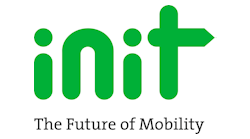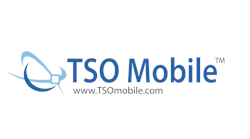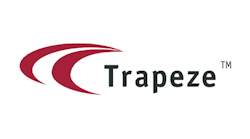Urbana, Ill.
Ryan Blackman
Software Developer/Network Administrator
Champaign-Urbana Mass Transit District
The Champaign-Urbana Mass Transit District (MTD) serves external and internal customers with a wealth of tools making bus route and schedule information readily available and improving communications. MTD has a team of communicators, operations and maintenance personnel, consultants, and administrators who work hand-in-glove with me to consistently provide accurate information while making continuous improvements.
External Communications - STOPwatch
The real-time bus departure information network is powered by an Init CAD/AVL intelligent transportation system. The data generated drives MTD's STOPwatch real-time status and planning tools. Prominent on MTD's website are a trip planner, bus stop lookup for stop real-time information, and a MyRIDE subscription service for reroute reports. Also available is a link to the App Garage, MTD's app clearinghouse. The mobile website delivers real-time departures and maps for mobile devices. MTD's information kiosks and LED signs at high-volume stops make real-time departure information immediately available.
MTD's General Transit Feed Specification (GTFS) is used to power trip planning and supplement real-time data. The trip planner uses Trapeze's ATIS tool to generate results on our website and in the apps. MTD also exports GTFS data so that customers may use Google Transit for trip planning.
MTD's Application Programming Interface (API) is made freely available to third-party developers to encourage development of apps. A 2012 App Contest resulted in a variety of apps. The contest encouraged developers to create apps for most platforms, and to competitively work to create the best possible app. Today, there are links to twenty apps in the App Garage.
All of these tools help instill confidence in riders resulting in a more pleasant experience. A new rider can get a detailed trip plan using MTD's website trip planner or Google Transit. All riders can get real-time departure information from one of several sources allowing them to maximize their personal time, minimize wait times at the stop, and increase confidence in the availability of service. Better yet, customers can access this information at the stop level which improves wayfinding and trip experiences.
Internal Communications - MTDweb
Internal electronic communications are accomplished using MTD’s intranet, MTDweb. MTDweb was custom developed internally and a major upgrade is underway. MTDweb allows employee-to-employee messaging; posting of bulletins, documents, and videos; and offers an employee directory with photographs. The intranet processes forms for reporting and employee requests, and houses an Apparel Shop. MTDweb tools enable updates to the external website and STOPwatch information kiosks are managed through the system. Operator trainees can take practice tests and view training videos. Leave requests, payroll requests, and accident reporting are available in MTDweb. MTDweb is an invaluable tool for internal communications, management and resource allocation.
MTD's technological tools improve communications across the board. The MTD team is committed to their continuous improvement and constantly seeks feedback while monitoring system performance. MTD has always been an early adopter of technological tools and we are excited to see what the future brings.
Miami, Fla.
Diego Capelluto
Director of Public Transportation Passenger Centered Solutions
TSO Mobile
It is no secret that technology has revolutionized the way that business is conducted in today’s world. With advances in communication and information technology, the aspects in operating a successful business are often reliant on the ability to share and receive information as quickly and efficiently as possible. One of the latest and most popular forms of continuously progressing technology is that of mobile devices and applications integrated within these devices.
Within the fleet management industry, with the assistance of mobile technology and applications, fleet managers are able to operate their businesses on the go, while gaining significant benefits. With mobile integration of applications, fleet management offices are able to maximize productivity, improve communication, optimize scheduling, reduce costs, provide better customer service and improve the overall performance of a fleet.
With GPS Fleet Tracking mobile apps, connected fleets can be listed on one single screen and provide real-time control about the whereabouts of vehicles. Increased productivity is achieved through an applications’ ability to access and select any and all vehicles within a fleet. Through different map views, it is easy to see and schedule route navigations while receiving constantly updated information about current and historical locations. With the capability to manage vehicles from anywhere, work orders can even be placed and processed with the push of a button. GPS tracking of vehicles, giving exact locations and information, can then give agencies the power to communicate with riders about scheduling and timing.
Because of a mobile applications’ ease of use, communication between drivers and operators is also made more efficient. Real-time chat and messaging capabilities are accomplished as different updates and statuses arise and need to be reported. Communication is instant, making solutions to problems or concerns easy and effective. The sharing of information then quickens the decision-making process in reducing costs of fleet performances when affected, such as tracking fuel usage.
Mobile applications allow the most important tools of a GPS Fleet Tracking System to become accessible at the palm of your hand, at the touch of a screen. With mobile apps that integrate with GPS Fleet Tracking Systems such as those of TSO Mobile, fleet operators are able to access professional versions of web systems that lets them track vehicles and entire fleets on the go. It also serves to relay detailed, important information and historical activity concerning monitored fleets.
The TSO Mobile “TSO Fleet Pro” GPS Fleet Tracking App may be downloaded from Google Play for Android phones and in the App Store for use on iPhones.
Missauga, Ont.
Marsha Moore
Chief Technology Officer
Trapeze Group
Convenience for the passenger is increasingly important to transit agencies and one of the major emerging trends in the transit world is the push toward supporting the ever-increasing array of payment options available to its riders. Juniper Research reports that that one in eight North American smartphone users will use their mobile device as a metro rail or bus ticket by 2016, thus it is critical that agencies modernize public transit by embracing those technologies that riders have become accustomed to in their daily experiences. Agencies are looking for technology that will help them expand their offering so they can enjoy all of the benefits that come with a smarter faring experience.
Ranging from $1 to $3, fares in fixed-route transit are typically a low-value item. Agencies have discovered that while there may always be a need to collect cash, reducing this need to a minimum can help decrease costs in many different ways. The manpower required to collect and count cash, the time needed to handle tendered cash, not to mention frequent delays in bus service when riders are searching for cash. Add to this, the enhanced security that is necessary to monitor cash along its journey from the passenger’s pocket to the bank, the risk of fraudulent, stolen or destroyed cash, these are the challenges that new faring technologies are eliminating. The future of transit faring is happening now as companies continue to explore technologies that allow mobile ticketing and real-time, account-based systems that accept smart cards and credit/debit card payment.
Mobile ticketing allows passengers to easily buy and manage their pass with their smartphones, any time, any place that is convenient to them, making the process when they finally board the transit service that much quicker and hassle free, in a similar fashion to the new ways you can now pay for your morning Starbucks or check-in to a commercial flight. Mobile payment technology and the availability of 4G LTE means especially great things for transit due to the low ticket costs and the frequency of transactions that occur. Mobile Ticketing allows riders to use their own devices, which reduces the dependence on specialized cards or devices, significantly expediting the boarding process while simultaneously reducing the cost of fare collection.
The benefits of smart faring technology are three-fold, improved passenger experience leads to an increase in ridership, the wealth of data collected through the use of these new technologies provides agencies with a much better understanding of their ridership and operations, while at the same time the agency enjoys substantial cost savings.
Belmont, Mass.
Jeffrey Scott
Vice President of Business Development
Smart Software
Minnesota’s Metro Transit is faced with perplexing spare parts inventory challenges. Continually maintaining and retiring aging fleets and introducing new ones, they need to know how much of which parts to stock, work-off, or divest. And they need to do this while maintaining or improving service levels, and within budgetary constraints and cost-cutting mandates.
Traditional, long-standing planning practices cannot produce the answers Metro Transit needs to manage 24,000 parts, valued at approximately $42 million, which support more than 1,000 bus, commuter rail, light rail and other vehicles. Part of the challenge is the sheer number of parts to be managed, but there is more to it.
Much of Metro Transit’s demand for spare parts is intermittent. Seemingly random and with no apparent pattern, intermittent demand is extremely difficult to forecast — and this is the case for 80 percent of Metro Transit’s active parts. Because of this, inventory planning at the agency has been an overwhelmingly manual and tedious endeavor based on the experience and expertise of two planners. When it comes to intermittent demand, many inventory planners either make guesstimates of parts needs based on experience, like Metro Transit, or don’t bother to forecast them at all.
Investigating how other transit agencies address similar challenges, Metro Transit found that several peers are using a combination of specialized software and a method of inventory planning with considerable success. Metro-North Railroad and Société de transport de Montréal deployed specialized demand forecasting and inventory optimization software, SmartForecasts from Smart Software, that enabled them to add thousands of parts for new fleets and reduce the value of their inventory by 10 to 15 percent while improving service levels.
In conjunction with Smart Software’s technology, Metro Transit is also using a service level driven method of inventory planning (SLDP) that will provide it with an action plan to simultaneously reduce its inventory and maintain service levels.
As part of this process, planners have found that 10 percent of the company’s inventory is obsolete, and that it has millions of dollars of parts outside its inventory stocking parameters. “If we can reduce this amount,” said Chris Haefner, Metro Transit’s manager of material management, “we can strategically reinvest the savings in parts where the service levels are too low. In other words, we can spend less money and increase the probability an item is in stock.”
Metro Transit is also finding that SLDP’s critical benefit, beyond knowing that inventory is out-of-balance, is to provide a rational, statistically based path to solving inventory problems. It enables planners to weigh the trade-offs between service level and inventory costs. In addition, it mitigates the risks involved in changing inventory policies by testing them before they’re implemented, and provides positive results faster than testing changes in the field.
According to Haefner, “We now have a solution and methodology in place that can automatically generate the inventory stocking information we need for most of our parts, including the 80 percent with intermittent demand, and allow our planners to concentrate on a small subset of critical parts that needed special attention.”
Cincinnati, Ohio
Stephanie Creech
Manager, Corporate Communications
First Transit
First Transit’s vision is to provide solutions for an increasingly congested world — keeping people moving and communities prospering. First Transit is fully committed to improving both customer service and passenger experience while remaining focused on safety and efficiency.
Commitment to these core values and to continuous improvement, drives First Transit to work collaboratively with clients to establish and refine technologies to benefit transit services. First Transit takes great pride in leveraging skills and industry knowledge to benefit the transit systems and the passengers it serves.
Recognizing the specific needs of passengers who, as determined by the Americans with Disabilities Act, are unable to ride traditional fixed-route transit services, First Transit is committed to providing safe, efficient paratransit services. First Transit has worked with client passengers and innovative technology developers to create software applications that meet the specific needs of paratransit passengers. First Transit has recently introduced its Info-Client, a paratransit travel app. This new tool rounds out the full Info-Suite line of products available, including Info-Manager, Info-Notification, Info-Reports, Info-BI, Info-Monitor, Info-CT, Info-Vehicle and Info-Broker. Each of them is designed to meet a specific need with either using or managing a paratransit service.
Info-Client – A Paratransit Travel App
One of the newest products in its suite of information products, First Transit’s Info-Clientis a versatile and scalable mobile solution designed to keep passengers in touch with their paratransit service. Using First Transit’s Info-Suite architecture, this secure mobile application allows passengers — from any smart mobile device or computer — to enter a unique ID and a personal password for a safe, secure connection to their service information.
This Paratransit Travel Companion utilizes scheduling and real-time information from the transit authority’s scheduling systems. The information displayed can be customized by the transit authority, using their own branding. Passengers now have greater control over their trip information with this new self-service product. Further extending the usability of service within the hearing impaired community by offering alternatives to retrieving and accessing information, Info-Client will become yet another means of enhancing customer service and enriching the lives of our riders.
With eight available options, passengers can view such information as:
- Today’s and Future Day Trips — View basic trip information, including real-time estimates of vehicle arrival.
- Subscriptions — View a list of current services to which the passenger subscribes.
- Messages — Receive enterprise or personal messages regarding service status or possible disruptions.
- Personal Info — View basic client record information for review and confirmation.
- Find Me — By pressing the “Find Me” button, passengers send current coordinates to the call center which can be viewed on a map and communicated to a driver.
- Info — View Transit Authority and call center contact information, local Transit Planner site links and Twitter and Facebook page access.
- Send Us Your Comments — Send comments about the service to a designated location within the company.
The Info-Suite applications, including this new Paratransit Travel Companion, enable First Transit and the transit systems with whom it partners to jointly achieve continuous improvement to the services and the accessibility provided to the communities they serve.





